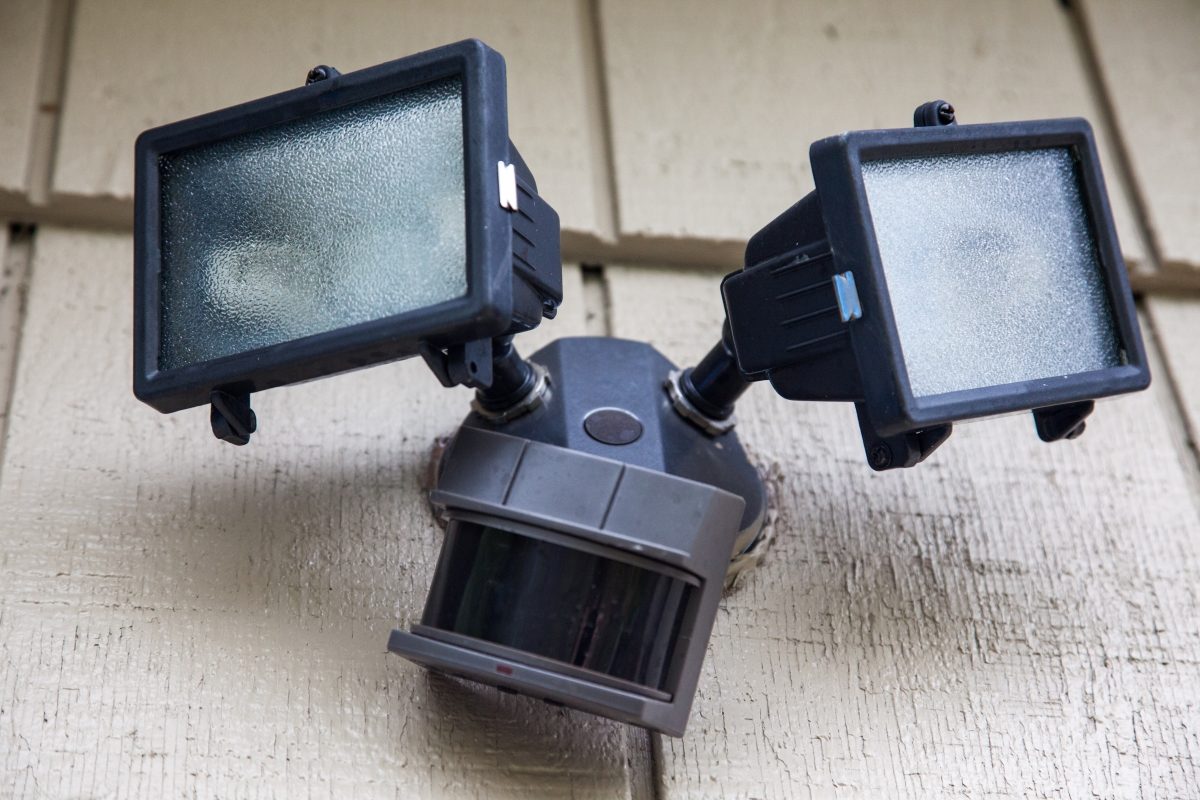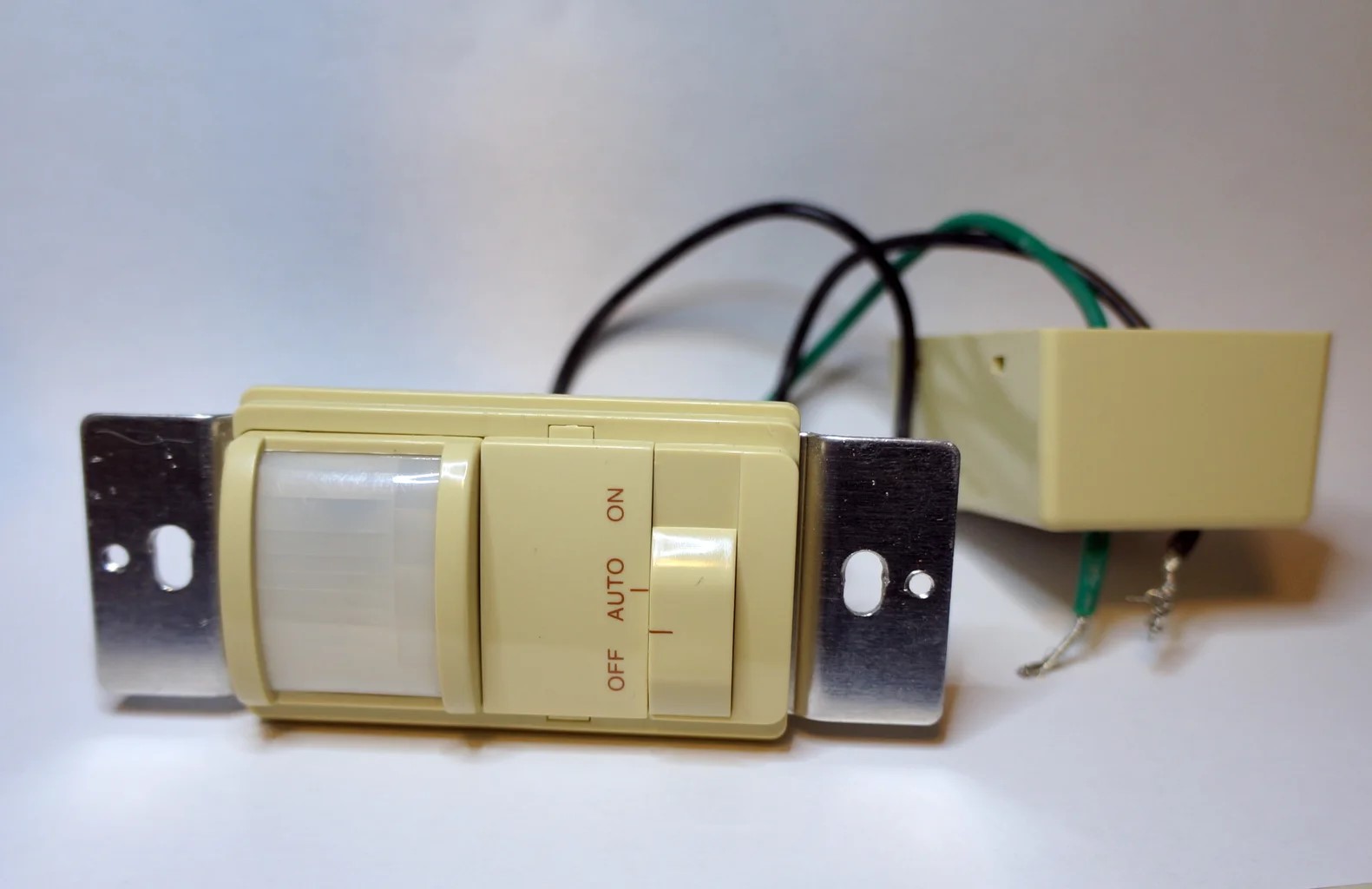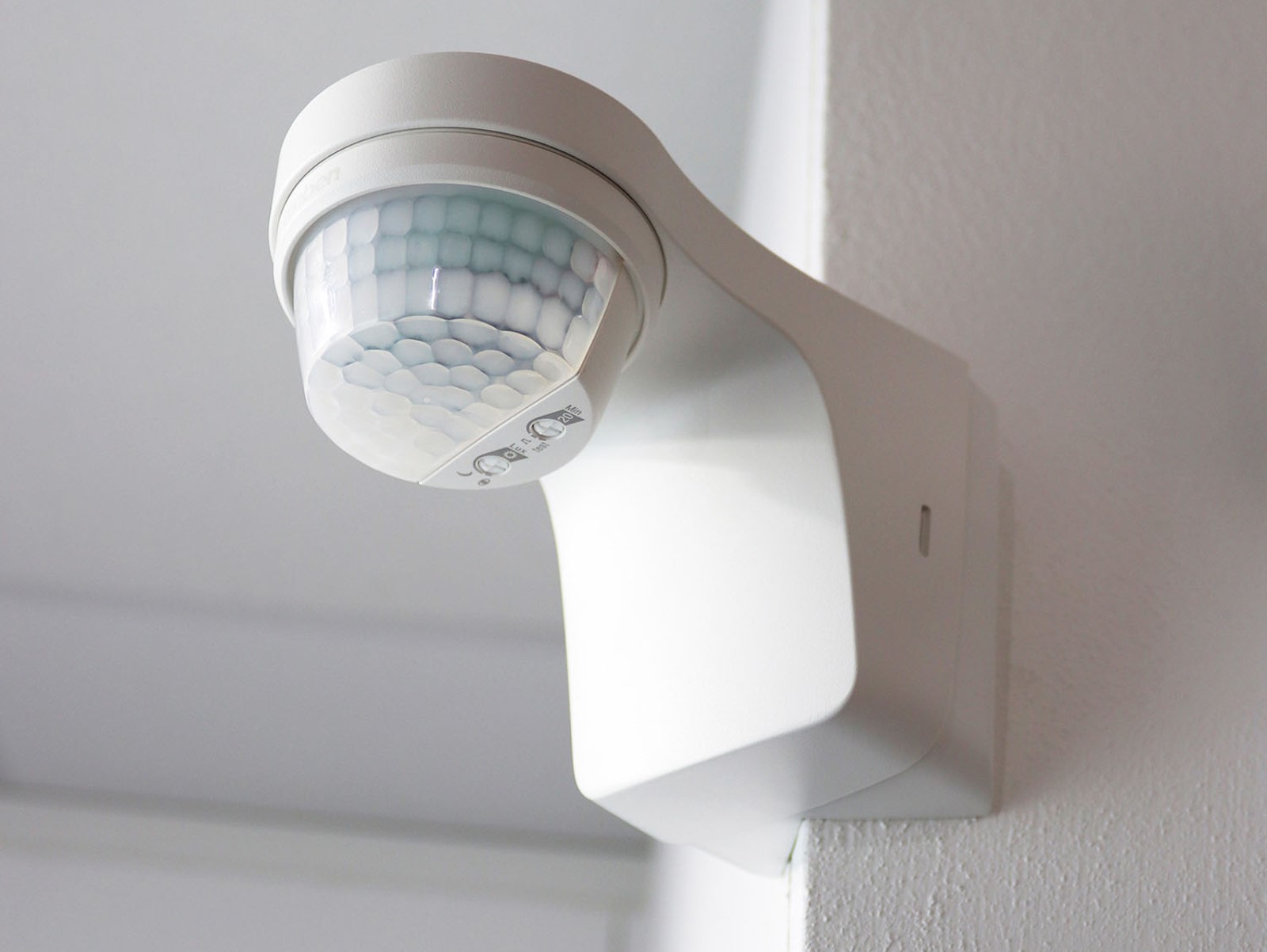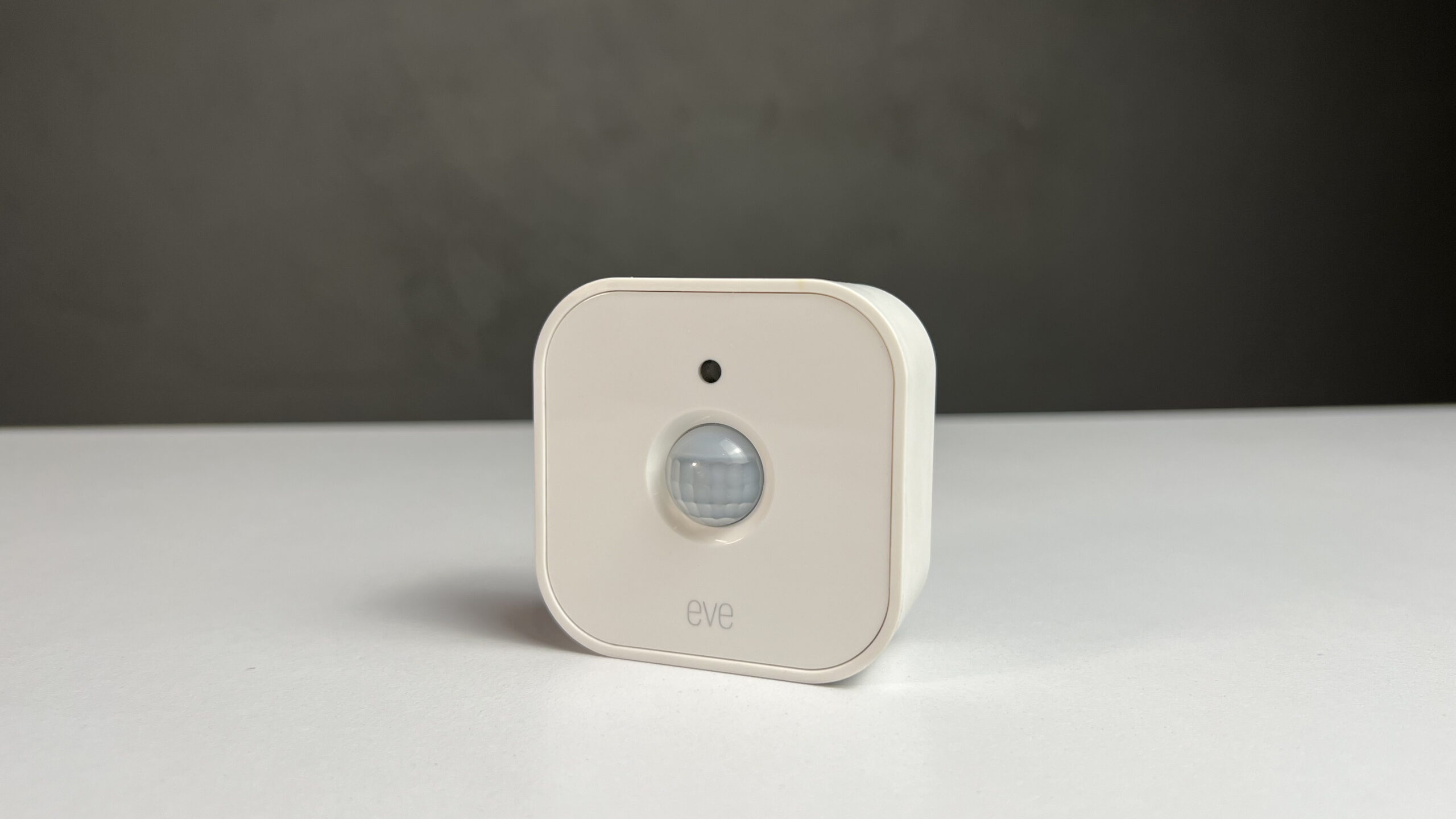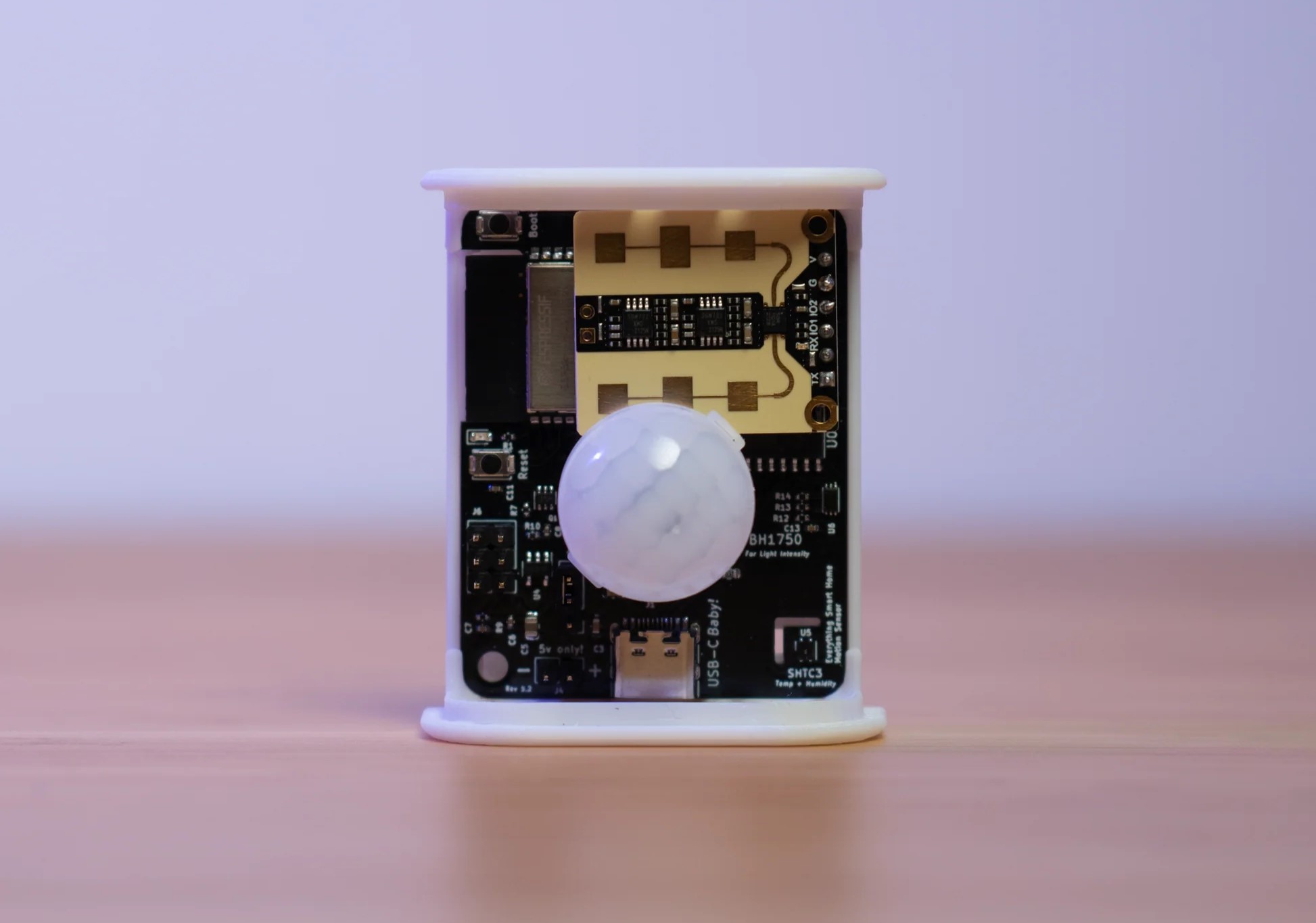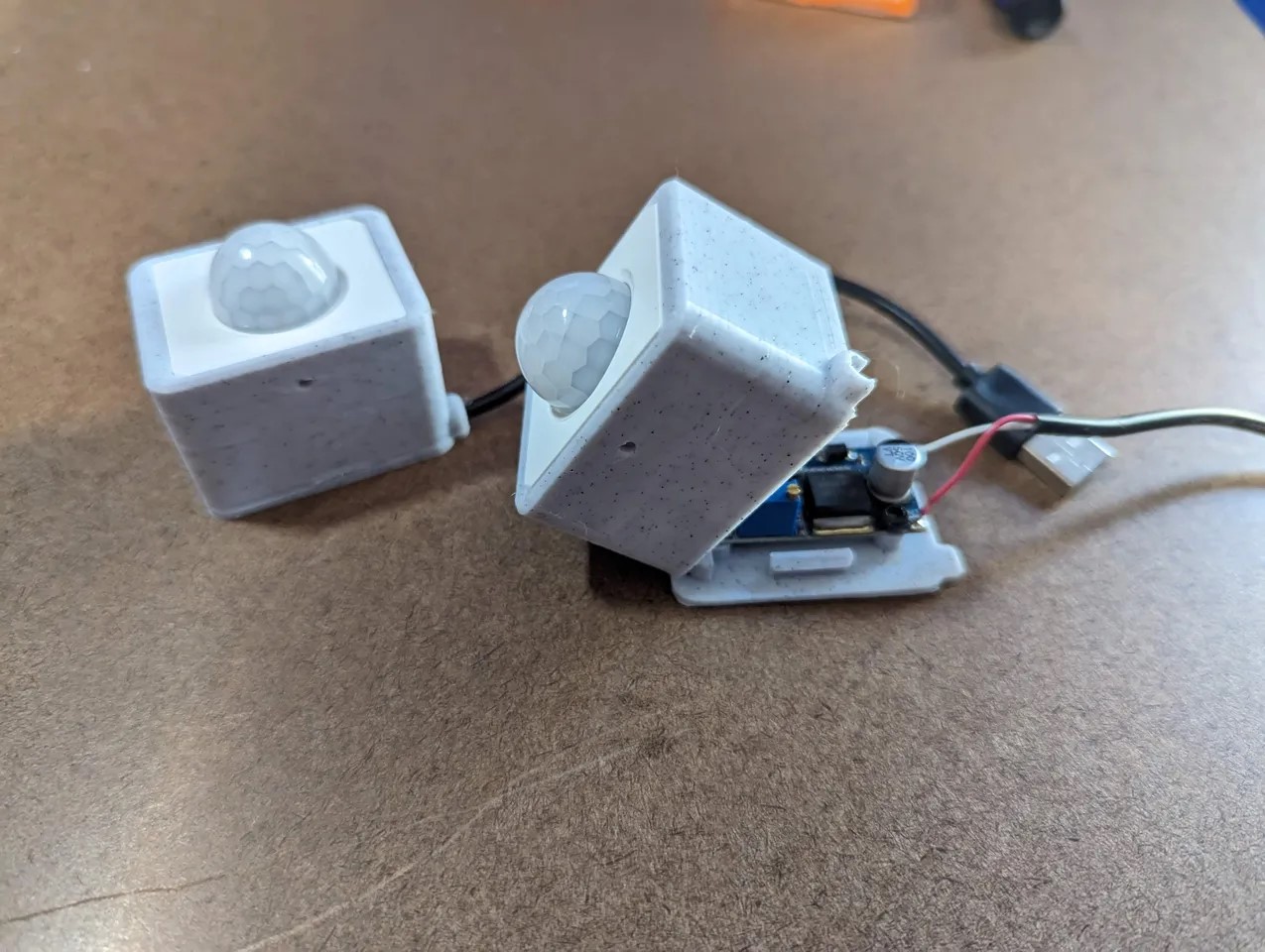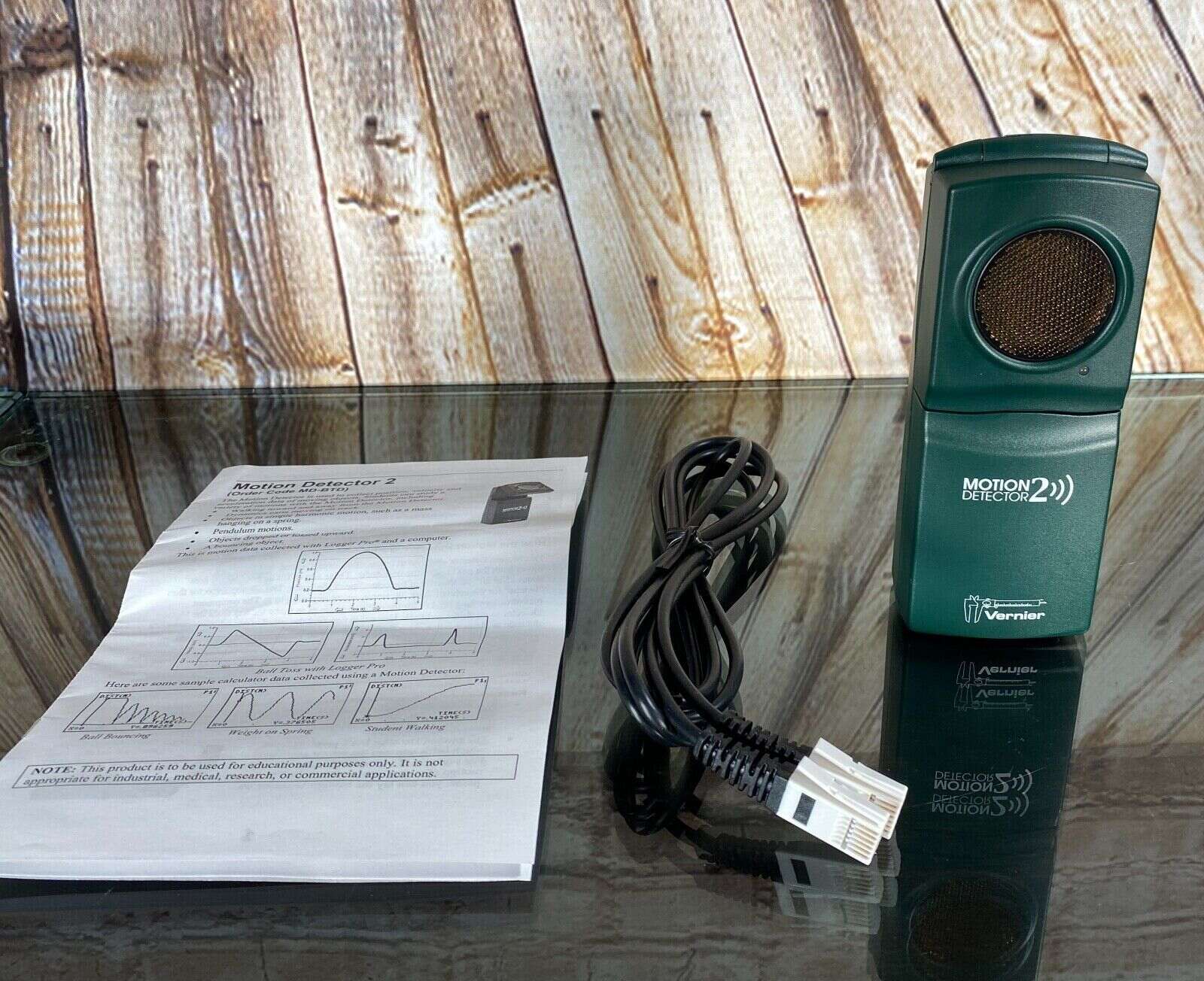Home>Home Security and Surveillance>Will The Motion Detector Still Operate If The Photocell Is Blocked With Duct Tape?
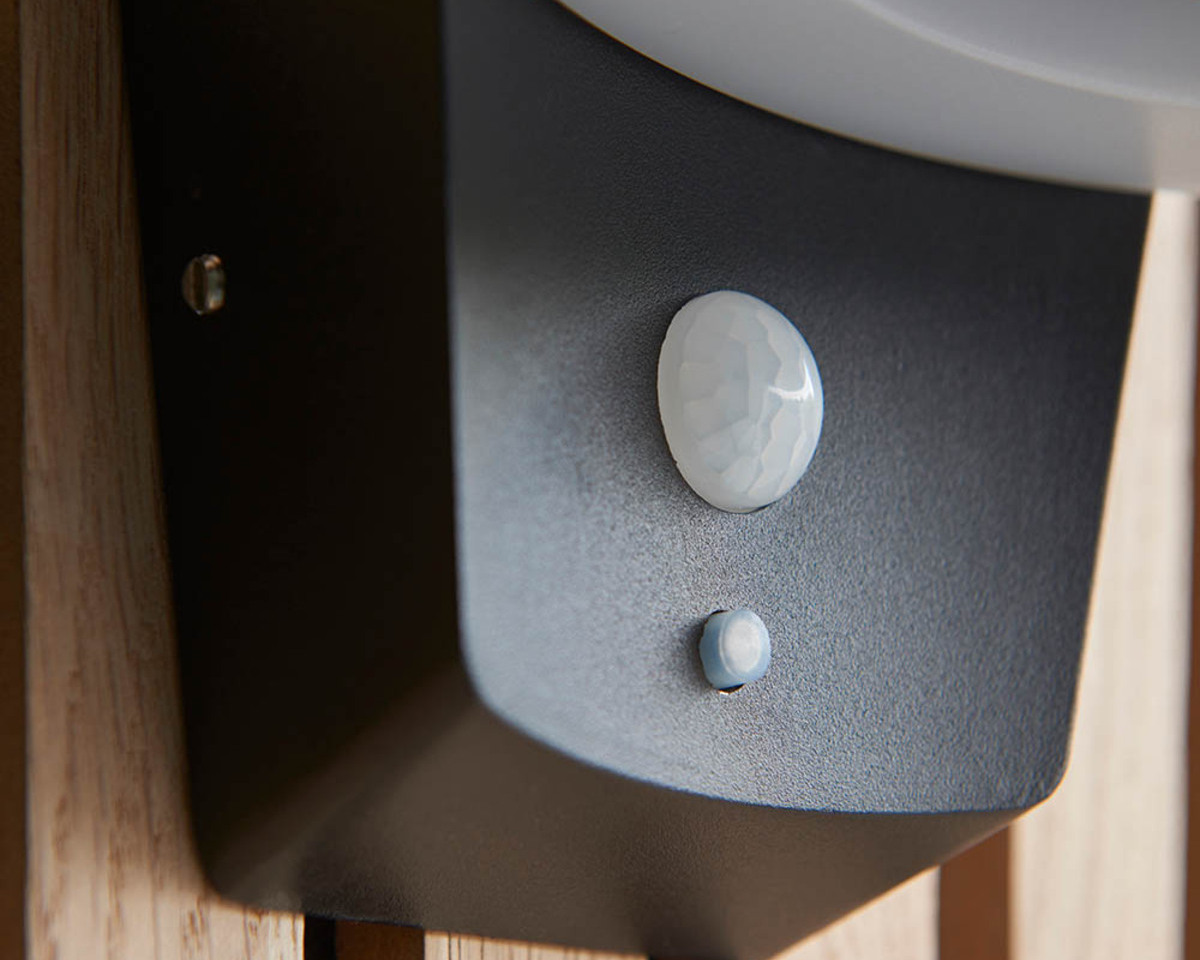

Home Security and Surveillance
Will The Motion Detector Still Operate If The Photocell Is Blocked With Duct Tape?
Modified: March 6, 2024
Discover if a motion detector can still function properly when the photocell is obstructed with duct tape. Enhance your home security and surveillance with this insightful analysis.
(Many of the links in this article redirect to a specific reviewed product. Your purchase of these products through affiliate links helps to generate commission for Storables.com, at no extra cost. Learn more)
Introduction
Welcome to the world of home security and surveillance! In today’s rapidly advancing technological era, keeping our homes safe and secure is of utmost importance. One of the most commonly used devices in home security systems is the motion detector, which detects movement within a specified range and alerts homeowners of potential intruders. However, motion detectors often work in conjunction with photocells, which play a crucial role in detecting ambient light levels and determining when the motion detector should activate.
But what happens if the photocell gets blocked, specifically with duct tape? Will the motion detector still be able to operate effectively? This article aims to answer this question by exploring the interaction between motion detectors and photocells and conducting experiments to determine the impact of blocking the photocell with duct tape. So, let’s dive in and uncover the truth about the functionality of motion detectors in different lighting conditions!
Key Takeaways:
- Blocking the photocell with duct tape significantly reduces motion detector accuracy and alert activation, emphasizing the need for unobstructed access to ambient light for optimal performance.
- Motion detectors heavily rely on ambient light information to differentiate between human movement and other factors, highlighting the importance of careful installation and consideration of alternative detection technologies.
Background: Motion Detectors and Photocells
Before diving into the details of motion detectors and photocells, let’s first understand their individual roles in the realm of home security and surveillance.
Motion detectors, also known as motion sensors or motion-activated sensors, are electronic devices designed to detect movement within a specified area. They are commonly used in home security systems to detect unauthorized entry or suspicious activities. Motion detectors work by sensing changes in heat or movement through various technologies such as infrared sensors, microwave sensors, and dual-technology sensors.
On the other hand, photocells, also referred to as light sensors or photoresistors, are devices that detect levels of ambient light. They are widely used in various applications, including motion detectors, to ensure accurate detection. Photocells work by varying their resistance based on the intensity of light falling on them. This variation in resistance is then processed by the motion detector to determine the appropriate response.
The integration of photocells in motion detectors is crucial for their effective functioning. Photocells provide the motion detector with valuable information about the ambient light conditions, allowing it to adjust its sensitivity and detection range accordingly. When there is sufficient ambient light, the motion detector may lower its sensitivity to prevent false alarms triggered by natural movements such as foliage rustling in the wind. Conversely, in low light conditions, the motion detector may increase its sensitivity to ensure accurate detection.
By working together, motion detectors and photocells offer a reliable and efficient solution for home security. However, it is important to consider the potential impact of blocking the photocell on the overall operation of the motion detector.
In the next section, we will explore the research question of whether the motion detector can still operate effectively if the photocell is blocked with duct tape. We will outline the methodology used to conduct experiments and the testing procedure in order to provide a comprehensive answer to this intriguing query!
Research Question: Will the Motion Detector Still Operate if the Photocell is Blocked with Duct Tape?
One of the common concerns among homeowners is whether the motion detector will continue to function if the photocell is obstructed with duct tape. The underlying question is whether the motion detector solely relies on the photocell for its operation or if it has alternative methods to detect motion even in the absence of ambient light information.
This research aims to address this question by conducting experiments to simulate scenarios where the photocell is blocked with duct tape. By analyzing the results, we can determine whether the motion detector can still fulfill its intended purpose of detecting movement and alerting homeowners in the event of a potential intrusion.
The outcome of this research has practical implications for homeowners, security system installers, and manufacturers. Understanding the behavior of motion detectors when the photocell is obstructed can help homeowners make informed decisions when it comes to the positioning and installation of their security devices. It can also assist security system installers in optimizing the placement of motion detectors for optimal performance.
Furthermore, the findings of this research can provide valuable insights for manufacturers in improving the design and functionality of motion detectors and finding alternative methods for motion detection in case of photocell obstruction.
In the next section, we will delve into the methodology employed to carry out the experiments and the testing procedure used to evaluate the performance of motion detectors when the photocell is blocked with duct tape. Stay tuned as we uncover the truth behind this intriguing question!
Methodology
In order to investigate the impact of blocking the photocell with duct tape on the operation of the motion detector, a systematic methodology was employed. The following steps outline the approach taken in conducting the experiments:
1. Selection of Motion Detector Models
Multiple motion detector models were chosen from different manufacturers to ensure a diverse range of devices. This allowed for a comprehensive analysis of the common behaviors exhibited by motion detectors when the photocell is blocked.
2. Setup and Calibration
Each motion detector was installed according to the manufacturer’s instructions in a controlled environment. The devices were calibrated as per the recommended settings, including sensitivity, detection range, and ambient light adjustment.
3. Baseline Testing
Prior to blocking the photocell, baseline tests were conducted to establish the normal functioning of the motion detectors. This involved creating controlled movements within the detection area and observing the response of the detectors, ensuring accurate detection and appropriate alerts.
4. Blocking the Photocell
Using duct tape, the photocell of each motion detector was carefully blocked to simulate a scenario where the ambient light information is not available to the device. The duct tape was applied securely to ensure complete obstruction of the photocell.
5. Experimental Testing
After blocking the photocell, controlled movements were once again introduced within the detection area of each motion detector. The response of the devices, including detection accuracy and alert activation, were recorded and analyzed.
Read more: How Do Motion Detector Cameras Operate
6. Data Analysis and Comparison
The data collected during the experimental testing phase was carefully analyzed and compared against the baseline tests. This allowed for a comprehensive evaluation of the motion detector’s performance when the photocell is blocked.
7. Repeat Tests and Validation
To ensure the reliability and validity of the findings, the experiments were repeated multiple times with different motion detector models. This helped in validating the results and identifying any patterns or variations among different devices.
The methodology outlined above provided a structured approach to investigating the research question. By following these steps, we aimed to gain insights into the behavior of motion detectors when the photocell is obstructed, contributing to a better understanding of their effectiveness in different lighting conditions.
In the following section, we will dive into the testing procedure and share the results and analysis derived from our experiments. Stay tuned!
Testing Procedure
The testing procedure was designed to assess the performance of motion detectors when the photocell was blocked with duct tape. The following steps outline the process undertaken to conduct the experiments:
1. Preparation
Before starting the experiments, the testing environment was prepared by ensuring proper lighting conditions. The ambient light levels were measured using a light meter to establish a baseline for comparison.
2. Baseline Testing
With the photocell unobstructed, baseline tests were conducted to establish the normal functioning of the motion detectors. This involved introducing controlled movements within the detection area and recording the response of the detectors, including detection accuracy and alert activation. The baseline tests served as a reference point for evaluating the impact of blocking the photocell.
3. Blocking the Photocell
Using duct tape, the photocell of each motion detector was carefully blocked to simulate a scenario where the ambient light information is not available to the device. The duct tape was applied securely to ensure complete obstruction of the photocell. The motion detectors were positioned in the same location as during the baseline tests to maintain consistency.
4. Experimental Testing
After blocking the photocell, controlled movements were introduced within the detection area of each motion detector. The movements were varied in speed, direction, and distance from the detector to assess the device’s ability to accurately detect motion. The response of the motion detectors, including detection accuracy and alert activation, were recorded and analyzed.
5. Data Collection and Analysis
All data collected during the experimental testing phase, including the motion detection results and alert activation, were carefully recorded. The data was then analyzed to evaluate the performance of the motion detectors when the photocell was blocked. The analysis focused on comparing the results with the baseline tests to determine any differences or limitations caused by the blocked photocell.
6. Repeat Tests and Validation
To ensure the reliability and consistency of the findings, the experiments were repeated multiple times with different motion detector models. This helped validate the results and identify any common patterns or variations among the devices. The repetition of the tests added to the robustness and accuracy of the findings.
By following this testing procedure, we were able to capture and evaluate the behavior of motion detectors when the photocell was blocked. The results obtained from the experiments, which will be discussed in the next section, shed light on the effectiveness of motion detectors in different lighting conditions and provide insights into the importance of the photocell in their operation.
Next, we will delve into the results and analysis derived from the experiments to determine the impact of blocking the photocell on the functionality of the motion detectors.
Results and Analysis
The results obtained from the experiments provide valuable insights into the performance of motion detectors when the photocell is blocked. The analysis of the data focuses on the detection accuracy and alert activation of the devices. Here are the key findings:
1. Detection Accuracy:
- In the baseline tests, with the photocell unobstructed, the motion detectors demonstrated a high level of detection accuracy. They were able to detect movement within the specified range with minimal false alarms.
- When the photocell was blocked with duct tape, the motion detectors’ detection accuracy was significantly compromised. The obstructed photocell prevented the devices from receiving ambient light information, resulting in reduced sensitivity and compromised detection capabilities.
- In some cases, the motion detectors failed to detect movement altogether when the photocell was blocked. This indicates the reliance of these devices on the photocell to accurately detect and respond to motion.
2. Alert Activation:
- In the baseline tests, the motion detectors promptly activated alerts, such as triggering an alarm or sending a notification, when movement was detected.
- With the photocell blocked, the motion detectors’ alert activation was either delayed or completely non-functional. The lack of ambient light information resulted in the devices failing to recognize and respond to motion appropriately.
- Some motion detectors attempted to compensate for the blocked photocell by relying solely on the motion sensors (infrared, microwave, or dual-technology). However, this led to an increased number of false alarms due to their limited ability to differentiate between human movement and other environmental factors.
These results highlight the critical role that the photocell plays in the accurate functioning of motion detectors. Blocking the photocell with duct tape significantly compromised the devices’ ability to detect motion and activate timely alerts. The reliance on ambient light information to adjust sensitivity and distinguish human movement from other factors became evident.
It is important for homeowners, security system installers, and manufacturers to be aware of the limitations introduced by blocked photocells to ensure optimal positioning and functionality of motion detectors.
Next, we will delve into the implications of these findings and discuss the broader implications for home security and surveillance.
Discussion
The results obtained from the experiments, which examined the impact of blocking the photocell on the functionality of motion detectors, raise important considerations for home security and surveillance. Let’s delve into the discussion surrounding these findings:
1. Reliance on Ambient Light
The experiments clearly demonstrate the heavy reliance of motion detectors on ambient light information provided by the photocell. Blocking the photocell compromised the devices’ ability to accurately detect motion and adjust sensitivity according to lighting conditions. This highlights the need for proper positioning and unobstructed access to ambient light for optimal performance.
2. False Alarms
When the photocell was blocked, some motion detectors attempted to compensate by solely relying on their motion sensors, which led to an increased number of false alarms. This suggests that the combination of ambient light information and motion detection technology is crucial in differentiating between human movement and other environmental factors. Homeowners should consider this when choosing and positioning motion detectors to minimize false alarm events.
3. Enhanced Security Technologies
The findings emphasize the importance of innovation in motion detection technology. Manufacturers can explore alternative methods that rely on multiple types of sensors, such as combining motion sensors with other technologies like sound or heat detection, to improve detection accuracy in low light conditions or when the photocell is obstructed.
4. Installation and Placement Considerations
Installers and homeowners should take into account the importance of unobstructed access to ambient light for motion detectors. Careful consideration should be given to their placement, avoiding any potential obstructions that can compromise the photocell’s functionality. Regular maintenance should also include ensuring that the photocell remains clean and unobstructed over time.
5. Integrated Home Security Systems
Homeowners who rely on integrated home security systems should consider the interplay between motion detectors and other components. For example, combining motion detectors with security cameras equipped with low-light or infrared capabilities can provide improved detection and visual verification even in areas with blocked photocells.
The discussion surrounding the impact of blocking the photocell on motion detectors emphasizes the importance of understanding the limitations and considerations associated with these devices. By considering these findings, homeowners and security system installers can make informed choices to enhance home security and surveillance systems.
In the following section, we will conclude with a summary of the findings and their implications for future research and development.
Conclusion
In conclusion, the experiments conducted to investigate the impact of blocking the photocell on the functionality of motion detectors have yielded important insights. The findings emphasize the crucial role of the photocell in the accurate operation of motion detectors, particularly in detecting motion and activating timely alerts. Blocking the photocell with duct tape significantly compromised the devices’ detection accuracy and alert activation capabilities.
Homeowners, security system installers, and manufacturers should consider the following key takeaways from this research:
- Proper positioning and unobstructed access to ambient light are crucial for optimal performance of motion detectors.
- Blocked photocells can result in reduced motion detection accuracy and increased false alarms.
- Motion detectors heavily rely on the combination of ambient light information and motion detection technology to differentiate between human movement and other environmental factors.
- Alternative methods and technologies should be explored to improve the functionality of motion detectors in low light conditions or when the photocell is obstructed.
- Careful consideration should be given to the installation and placement of motion detectors, avoiding any potential obstructions that can compromise the photocell’s functionality.
- Integrated home security systems, combining motion detectors with other technologies like security cameras, can provide enhanced detection and visual verification capabilities.
It is important to note that this research was limited to the specific scenario of blocking the photocell with duct tape. Future research could explore the impact of other types of obstructions on motion detector performance and further investigate alternative methods for motion detection in the absence of ambient light information.
By taking into account the findings of this research, homeowners can make informed decisions regarding the installation and management of their home security systems. Security system installers can optimize the positioning and calibration of motion detectors for optimal performance. Manufacturers can use these insights to improve the design and functionality of motion detectors, enhancing their performance in various lighting conditions.
Overall, this research contributes to our understanding of motion detectors and their reliance on photocells. It underscores the importance of ensuring unobstructed access to ambient light for these devices, ultimately enhancing the effectiveness of home security and surveillance systems.
Limitations and Future Research
While the experiments conducted in this research shed light on the impact of blocking the photocell on the functionality of motion detectors, it is important to acknowledge certain limitations and identify areas for future research. These include:
1. Controlled Testing Environment
The experiments were conducted in a controlled environment with predetermined conditions. Real-world scenarios may present different lighting conditions and variables that could affect the performance of motion detectors when the photocell is blocked. Future research should consider conducting experiments in various real-world settings to validate and generalize the findings.
2. Limited Sample Size
The research utilized a limited number of motion detectors and models from different manufacturers. While efforts were made to ensure diversity, expanding the sample size and including a broader range of devices would enhance the validity and generalizability of the findings.
3. Blockage Methods
The research focused on blocking the photocell with duct tape as a means of simulating a scenario where the ambient light information is unavailable. Future research could explore other methods of obstructing the photocell, such as using opaque materials or physical barriers, to determine any variations in motion detector performance.
4. Alternative Motion Detection Technologies
This research focused predominantly on motion detectors that rely on a combination of ambient light information and motion detection technology. Future research could investigate the performance of motion detectors equipped with alternative motion detection technologies, such as active infrared or ultrasonic sensors, in scenarios where the photocell is blocked.
5. Integration with Other Security Devices
Further investigation into the integration of motion detectors with other security devices, such as security cameras or sound sensors, could provide valuable insights into enhancing detection accuracy and reducing false alarms in low light or blocked photocell situations.
6. Long-Term Performance and Durability
Future research could explore the long-term performance and durability of motion detectors when the photocell is blocked. Factors such as dust accumulation, wear and tear, and varying environmental conditions could influence the devices’ functionality and warrant further investigation.
Addressing these limitations and pursuing future research in these areas would contribute to a deeper understanding of motion detectors and their performance in different scenarios. By expanding the knowledge base, we can continue to enhance the effectiveness and reliability of home security and surveillance systems.
Frequently Asked Questions about Will The Motion Detector Still Operate If The Photocell Is Blocked With Duct Tape?
Was this page helpful?
At Storables.com, we guarantee accurate and reliable information. Our content, validated by Expert Board Contributors, is crafted following stringent Editorial Policies. We're committed to providing you with well-researched, expert-backed insights for all your informational needs.
